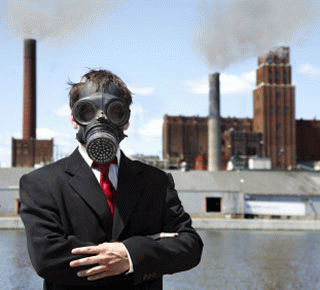Violence, as never before, strikes Americans in churches, movie theaters, schools, malls, and in neighborhoods that had formerly been safe. The chief cause of it is never mentioned because the chief cause implicates American industry. With promises given at the end of World War II that we would all live better through chemistry, they had us jettison natural products and processes. In their place, we were exposed to an array of toxins that were wildly beyond what humans had been designed to bear.
Rene Dubos tried to warn us in a 1970 essay entitled "The Limits of Adaptability." These toxic exposures, he said, will cause an increase in diseases. More menacing, however, will be, he said, the "distortions of mental and emotional attributes" that will likely turn us into "a form of life that will retain little of true humanness."
Twenty years later, Joseph Beasley, in The Betrayal of Health. (Times Books, 1991) concluded that the benefits and conveniences of today's chemical-based technology "have come at too high a price." Among the effects he noted was a "steady rise in violent behavior." (See pages 132 and 173-174.)
In 1981, after seventeen years in the private practice of law, I took a job as an administrator in a state environmental regulatory department. Here's what I saw. The regulators, both state and federal, were intensely fearful of making significant demands on industry. As a result, they came nowhere near curtailing exposures that were obviously affecting us all behaviorally. And that's the case to this day. Dubos went unheard, as did Beasley. Most recently, the eminent Philippe Grandjean is being disregarded. See his Only One Chance: How Environmental Pollution Impairs Brain Development... (Oxford University Press, 2013).
After leaving government, I began asking myself this question. If we're headed toward a brutish society in which educability, impulse control, and even consciousness are in decline as a result of environmental exposures, what could possible stop the looming tragedy?
I found the answer in Article IV, Section 4 of the U.S. Constitution. The civil emergency provision therein requires the "United States" to "protect" us "against domestic violence." The framers understood that we, ourselves, were likely to be the engines of our own demise. (See Federalist, No. 6.) And they understood that securing us from the dangers of domestic violence might require an extensive, emergency response. It "ought to know no other bounds than the exigencies of the nation and the resources of the community." (See Federalist, No. 31.) In other words, the federal response needs to squarely face the full extent of the threat, and all resources of the nation must be used, if necessary, to remove that threat.
The threat we face is annihilation. Environmental exposures are causing massive increases in diseases like cancer, asthma, and autism. At the same time, exposures are making us a violent society with diminishing consciousness and declining mental acuities. And all this is occurring at a time when we most need our wits about us. The global warming we've created is bringing chaos and destruction to our planet. A rational and orderly response is required.
Well, how is it that we should expect the federal government to protect us now, when it hasn't all along? The answer to that question is found in U.S. Supreme Court cases such as Colgrove v. Green (1946). Justice Felix Frankfurter, writing for the Court, said that the domestic violence clause is a people's provision. We are to determine what is and what is not a condition of domestic violence. And we, not the lawyers and the courts, are to decide what must be done to stop the violence.
(Note: You can view every article as one long page if you sign up as an Advocate Member, or higher).





